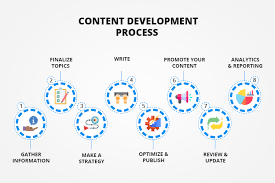Understanding Your Audience
Effective communication, especially in the context of preparing a speech on human health, necessitates a profound understanding of the audience. Identifying the demographics of the listeners—such as age, gender, education, and cultural background—plays a crucial role in tailoring the information conveyed. For instance, a speech aimed at high school students will differ markedly in tone and complexity from one directed toward healthcare professionals. Recognizing these differences enables a speaker to frame their message appropriately, ensuring that it resonates with the specific audience.
Moreover, gauging the interests and values of the audience is essential for creating relevant content. Understanding what health issues resonate with the listeners can greatly enhance engagement. For example, if the audience is composed of young parents, topics such as childhood nutrition or vaccination may capture their attention far more effectively than general discussions about adult health. Hence, a preparatory assessment of audience interests can guide the speaker in choosing a focal point that aligns with listeners’ expectations and concerns.
Equally important is the assessment of the audience’s existing knowledge level regarding human health. This factor is significant in determining how in-depth or simplified the speech should be. When the audience possesses a basic understanding of health concepts, a speaker can introduce more complex ideas without overwhelming them. Conversely, if the audience lacks familiarity with certain topics, it becomes critical to provide foundational knowledge first. Addressing potential questions and misconceptions the audience may have about health issues not only demonstrates empathy but also fosters a more interactive atmosphere, encouraging open dialogue.
In conclusion, understanding your audience is imperative when preparing a speech on human health. By effectively assessing demographics, interests, and knowledge levels, speakers can engage listeners meaningfully and address their specific health concerns.
Research and Content Development
Effective communication is vital when preparing a speech on human health, and the foundation of any compelling presentation lies in thorough research and well-organized content. To begin, it is essential to identify reliable sources that can provide accurate and relevant information. Scientific journals serve as one of the most authoritative resources, offering peer-reviewed articles that detail the latest studies, findings, and breakthroughs in the realm of health. Accessing databases such as PubMed or Google Scholar can facilitate the discovery of articles addressing specific health issues and trends.
In addition to scientific journals, health organizations’ websites—such as the World Health Organization (WHO) and the Centers for Disease Control and Prevention (CDC)—are invaluable for accessing trustworthy statistics and policy statements. These organizations typically publish reports, guidelines, and educational materials that can help inform the speech’s content. By integrating data from these websites, a speaker can ensure that the information presented is not only accurate but also relevant to contemporary public health challenges.
Conducting expert interviews is another effective tactic for gathering nuanced insights into specific health topics. Engaging with healthcare professionals, researchers, or public health advocates can provide a unique perspective that enriches the speech. These interviews can uncover not just facts and figures, but also personal experiences and anecdotes that resonate with the audience.
Once a diverse range of information has been collected, the next step is to organize the data into coherent themes or topics. This process may involve creating an outline that categorizes information into main ideas and supporting points, allowing for a logical flow throughout the speech. By structuring the content in this manner, the speaker can convey complex ideas in a clear and accessible way, ultimately enhancing the audience’s understanding of important health issues.
Structuring the Speech

Effective communication during a speech on human health begins with a well-defined structure that guides your audience through your message. An impactful speech is typically divided into three main components: the introduction, the body, and the conclusion. Each part serves a distinct purpose that contributes to the overall effectiveness of the presentation.
The introduction is crucial; it sets the tone for the speech and grabs the audience’s attention. To achieve this, start with a compelling hook—an interesting fact, a thought-provoking question, or a relevant anecdote that resonates with the audience’s experiences regarding health. Following the hook, it is essential to introduce your main topic succinctly, outlining what you will cover. A brief overview instills clarity and prepares the audience for the information to come, which engages them right from the start.
Moving to the body of the speech, this section presents the primary ideas and arguments in a clear and logical sequence. Organizing the content by themes or concepts ensures that the audience can follow along easily. It is beneficial to use transitional phrases to maintain a coherent flow. Furthermore, integrating statistics and anecdotes reinforces your key points and makes them more relatable. For example, when discussing health statistics, it is effective to connect numerical data to real-life implications, allowing the audience to visualize the information’s relevance. Using personal stories can evoke emotion and emphasize the significance of the topic, enhancing engagement.
The conclusion must provide a memorable ending. Summarizing the main points succinctly reinforces your message and informs the audience of key takeaways. Additionally, a call to action invites them to reflect on the information presented and encourages future engagement with the topic of human health. Ultimately, a well-structured speech not only conveys vital information but also leaves a lasting impact on the audience.
Practicing and Delivering the Speech
Practicing and delivering a speech on human health requires both preparation and confidence. One of the most effective techniques to reduce anxiety is thorough preparation. Familiarizing oneself with the content not only enhances understanding but also bolsters self-assurance. Rehearsing the speech multiple times, preferably in front of a mirror or recording oneself, can provide insights into one’s pacing and intonation, allowing for adjustments before the actual presentation.
Utilizing body language effectively is another vital aspect of delivering a compelling speech. Gestures should complement the spoken words, as they can help to emphasize key points and keep the audience engaged. Maintaining good posture conveys confidence, while purposeful movements can direct attention to significant visual aids that augment the speech. Speaking with an open stance, rather than hiding behind a podium, encourages a connection with the audience.
Making eye contact is essential for establishing rapport with listeners. It demonstrates confidence, sincerity, and engagement. Scanning the audience and holding eye contact with different individuals can also create a more inclusive atmosphere, making everyone feel part of the discussion. If handling audience questions during or after the presentation, it is important to remain composed. Taking a moment to think before responding not only shows respect for the questioner but can also yield more thoughtful answers.
Incorporating visual aids can significantly enhance comprehension, especially on complex topics pertaining to human health. PowerPoint slides, charts, or videos can serve as effective tools to illustrate concepts and keep the audience’s attention. However, reliance on these aids should be balanced; they are there to support your message, not replace your spoken words. After the presentation, inviting feedback from peers or the audience can provide valuable perspectives for future improvements.





Leave a Reply